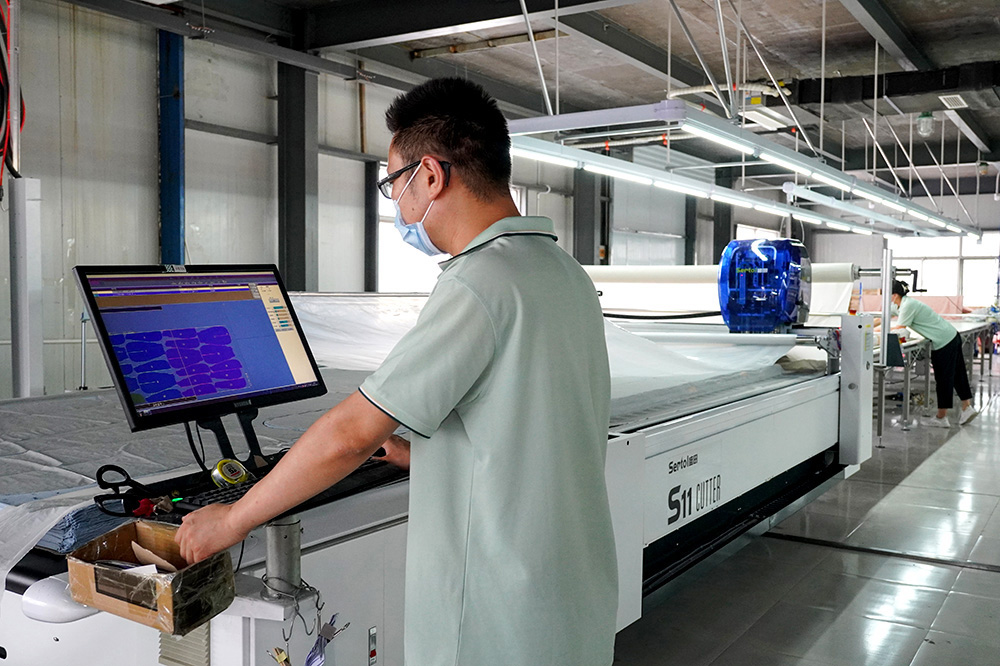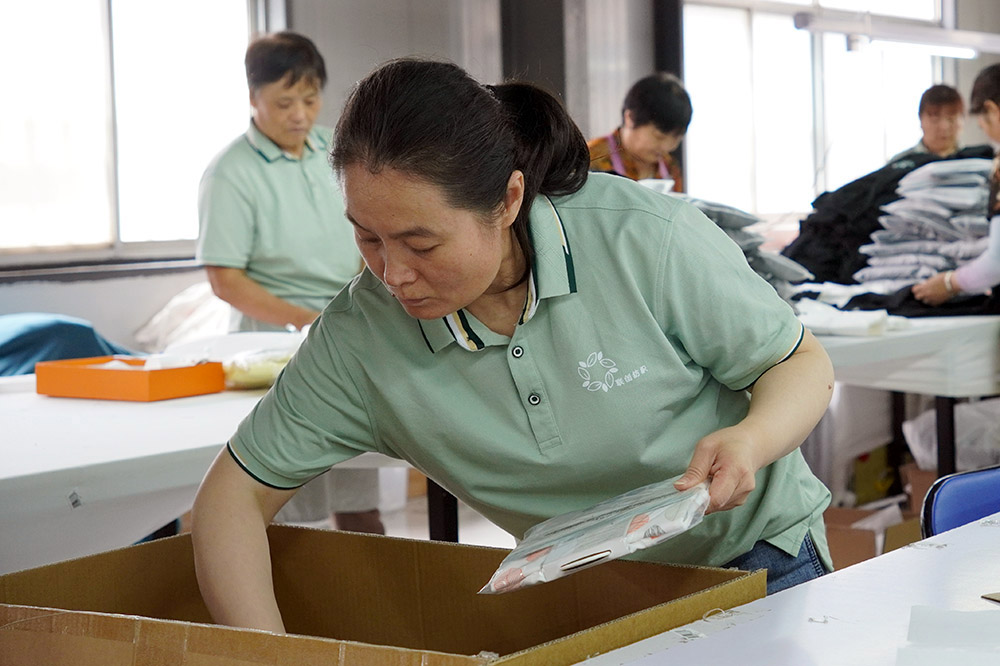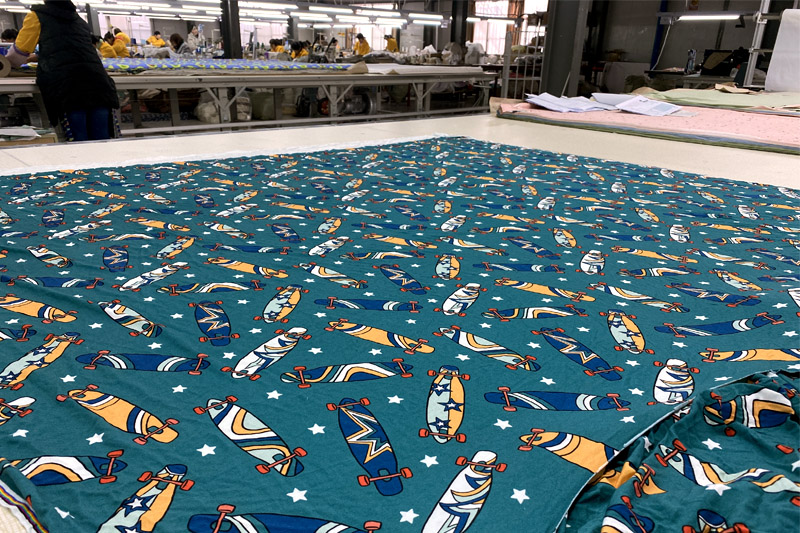
Introduction
Understanding the dynamics of the Chinese infant clothing supply chain is crucial for businesses aiming to capitalize on this vast and rapidly growing market. China, with its well-established manufacturing infrastructure and advanced technological capabilities, offers a diverse array of supply chain hubs that can cater to different business needs. This article provides a detailed overview of the major supply chain hubs in China, their advantages and challenges, and key considerations when choosing a supplier.
Overview of the Chinese Infant Clothing Supply Chain
China's infant clothing supply chain is a complex network of manufacturers, suppliers, and distributors that span across several key provinces. Each province has its own unique strengths and challenges, making it important for businesses to understand these nuances to make informed sourcing decisions. The primary supply chain hubs include Guangdong, Shandong, Zhejiang, Jiangsu, and Fujian provinces

The Major Supply Chain Hubs in China
Guangdong Province: The Powerhouse of Production
Overview and Significance
Guangdong Province is widely recognized as a manufacturing powerhouse, particularly in the textile and apparel industry. It is home to some of China's largest and most advanced production facilities, making it a preferred choice for many international brands.
Key Cities: Guangzhou, Shenzhen
Guangzhou and Shenzhen are the key cities in Guangdong that drive its infant clothing supply chain. Guangzhou is known for its extensive manufacturing capabilities and vast network of suppliers, while Shenzhen is a hub for innovation and technology.
Advantages of Sourcing from Guangdong
- Extensive Manufacturing Capabilities: Guangdong offers a wide range of manufacturing options, from small-scale workshops to large factories with advanced machinery.
- Advanced Technology: The province is at the forefront of adopting new technologies, ensuring efficient production processes and high-quality output.
- Skilled Workforce: A large pool of skilled labor ensures high production standards and quick turnaround times.
Challenges of Sourcing from Guangdong
- High Costs: The advanced infrastructure and high demand can lead to higher production costs compared to other regions.
- Intense Competition: The popularity of Guangdong as a sourcing hub means intense competition among businesses.
Zhejiang Province: The Innovation Hub
Overview and Significance
Zhejiang Province is renowned for its innovation in the textile industry. It is a center for design and development, making it an ideal location for businesses looking for creative and unique infant clothing solutions.
Key Cities: Hangzhou, Ningbo
Hangzhou and Ningbo are the key cities that contribute to Zhejiang's status as an innovation hub. Hangzhou is famous for its tech-savvy environment and vibrant startup culture, while Ningbo is known for its strong manufacturing base.
Advantages of Sourcing from Zhejiang
- Innovation and Design: Zhejiang excels in innovative designs and high-quality fabrics, making it a leader in fashion-forward infant clothing.
- Strong Manufacturing Base: The province has a well-developed manufacturing infrastructure that supports both small and large-scale production.
Challenges of Sourcing from Zhejiang
- High Labor Costs: The focus on innovation and quality can lead to higher labor costs.
- Logistical Issues: Depending on the specific location, logistics can sometimes be challenging.

Jiangsu Province: The Balanced Player
Overview and Significance
Jiangsu Province offers a balanced approach to infant clothing manufacturing, combining quality, cost-efficiency, and production capacity. It is a favored choice for businesses looking for a reliable and consistent supply chain.
Key Cities: Suzhou, Wuxi
Suzhou and Wuxi are key cities in Jiangsu that play significant roles in the province's textile industry. Suzhou is known for its high-quality silk and textile production, while Wuxi is a major manufacturing center.
Advantages of Sourcing from Jiangsu
- Balanced Production: Jiangsu provides a balance between quality and cost, making it an attractive option for many businesses.
- Advanced Infrastructure: The province boasts advanced manufacturing facilities and a well-established supply chain network.
Challenges of Sourcing from Jiangsu
- Environmental Regulations: Strict environmental regulations can sometimes pose challenges for manufacturers.
- Competition: Like Guangdong, Jiangsu also faces intense competition among suppliers.
Fujian Province: The Emerging Force
Overview and Significance
Fujian Province is an emerging force in the infant clothing supply chain, offering a growing number of manufacturing options with competitive pricing and increasing quality standards.
Key Cities: Quanzhou, Xiamen
Quanzhou and Xiamen are the leading cities in Fujian's textile industry. Quanzhou is known for its comprehensive production capabilities, while Xiamen is a hub for international trade.
Advantages of Sourcing from Fujian
- Competitive Pricing: Fujian offers more competitive pricing compared to more established hubs like Guangdong and Zhejiang.
- Growing Quality Standards: The province is steadily improving its production quality, making it a viable option for high-quality infant clothing.
Challenges of Sourcing from Fujian
- Developing Infrastructure: While improving, the infrastructure in some areas may not be as advanced as in other provinces.
- Limited Innovation: Compared to Zhejiang, Fujian may lag in terms of innovation and design capabilities.

Key Considerations When Choosing a Supplier
Quality Control
Ensuring high-quality production is paramount in the infant clothing industry. Businesses should look for suppliers with stringent quality control measures in place to maintain consistency and safety.
Cost Efficiency
Balancing cost and quality is crucial. It's important to find suppliers that offer competitive pricing without compromising on the quality of the products.
Production Capacity
Assessing a supplier's production capacity is essential to ensure they can meet your demand. This includes evaluating their facilities, workforce, and ability to scale production as needed.
Technological Capabilities
Suppliers with advanced technological capabilities can offer more efficient production processes, better quality control, and innovative product designs. Look for suppliers that invest in the latest technology and equipment.
The Role of Technology in Supply Chain Management
Automation and Efficiency
Automation plays a critical role in enhancing production efficiency and reducing human error. Suppliers using automated systems can provide faster turnaround times and consistent product quality.
Use of AI and Data Analytics
AI and data analytics are transforming supply chain management by providing insights into production processes, demand forecasting, and inventory management. Suppliers leveraging these technologies can offer more reliable and responsive services.
Improving Supply Chain Transparency
Technology can improve transparency across the supply chain, allowing businesses to track the production process, monitor quality control, and ensure compliance with industry standards.
Sustainability in the Infant Clothing Supply Chain
Importance of Sustainable Practices
Sustainable practices are increasingly important in the infant clothing industry. Consumers and businesses alike are prioritizing environmentally friendly production methods and materials.
Efforts in Reducing Environmental Impact
Efforts to reduce environmental impact include using organic materials, minimizing waste, and adopting energy-efficient production processes. Suppliers committed to sustainability can provide a competitive edge.
Examples of Sustainable Practices in China
Several suppliers in China are leading the way in sustainable practices, such as using recycled materials, implementing green manufacturing processes, and adhering to international environmental standards.
Case Studies: Successful Brands and Their Supply Chain Strategies
Brand A: Leveraging Guangdong's Capabilities
Brand A has successfully leveraged Guangdong's extensive manufacturing capabilities to produce high-quality infant clothing at scale. By partnering with top-tier suppliers in Guangzhou and Shenzhen, they have achieved efficient production and consistent product quality.
Brand B: Innovating with Zhejiang's Resources
Brand B has capitalized on Zhejiang's innovation and design expertise to create unique and fashionable infant clothing lines. By collaborating with suppliers in Hangzhou and Ningbo, they have brought cutting-edge designs to the market.
Brand C: Balancing Quality and Cost in Jiangsu
Brand C has found a balance between quality and cost by sourcing from Jiangsu. Their strategic partnerships with suppliers in Suzhou and Wuxi have allowed them to maintain high production standards while keeping costs manageable.
Brand D: Capitalizing on Fujian's Emerging Market
Brand D has taken advantage of Fujian's emerging market to source competitively priced and high-quality infant clothing. By working with suppliers in Quanzhou and Xiamen, they have been able to scale production and expand their market presence.
Conclusion
In summary, choosing the right supply chain hub in China for infant clothing manufacturing involves considering various factors such as quality control, cost efficiency, production capacity, and technological capabilities. Each province offers unique advantages and challenges, making it essential for businesses to carefully evaluate their options. By understanding the strengths of Guangdong, Zhejiang, Jiangsu, and Fujian, businesses can make informed decisions that align with their strategic goals.
FAQs
What is the best province for sourcing high-quality baby clothing?
Each province has its strengths. Guangdong is known for its extensive manufacturing capabilities, Zhejiang for innovation and design, Jiangsu for balancing quality and cost, and Fujian for competitive pricing and emerging quality standards.
How can technology improve supply chain management?
Technology improves supply chain management through automation, AI, data analytics, and transparency. These advancements lead to more efficient production, better quality control, and responsive supply chain operations.
What are the main challenges of sourcing from China?
The main challenges include high production costs in certain regions, intense competition, logistical issues, and strict environmental regulations.
How important is sustainability in the supply chain?
Sustainability is increasingly important as consumers and businesses prioritize environmentally friendly practices. Sustainable supply chains reduce environmental impact and meet growing demand for eco-friendly products.
What should I look for in a baby clothing supplier?
Key considerations include quality control measures, cost efficiency, production capacity, and technological capabilities to ensure the supplier meets your specific requirements.